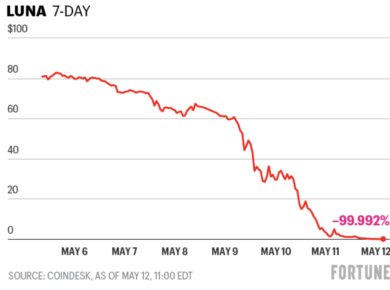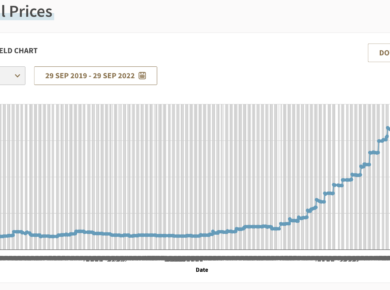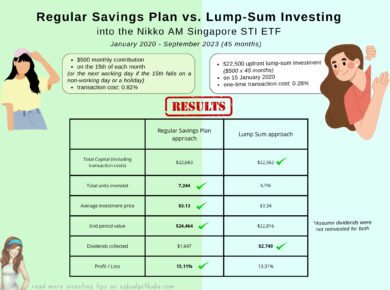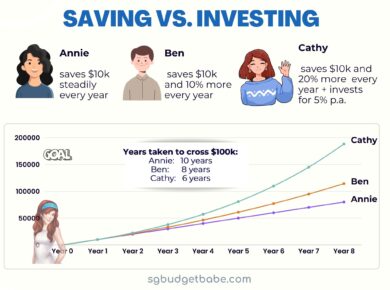I spent my Saturday at an investment conference jointly organised by DollarsAndSense and InvestingNote, and this is what I learnt.
The event had several notable speakers, particularly Terence Wong of Azure Capital (recently featured in The Sunday Times “My Money & Me”) and David Kuo of The Motley Fool (who appeared looking exactly like the Motley Fool’s logo with their special hat), and was aptly titled:
IN THE FOOTSTEPS OF MASTERS: Going Beyond #myfirsttrade
I attended the conference with my son (financial education starts young!) and these were my key takeaways:
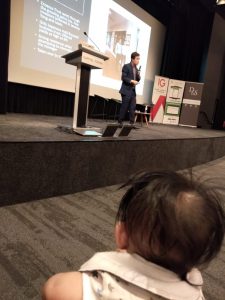 |
| The youngest investor in the room. Nate has his own investment portfolio also okay (managed by his mama), so don’t play play! |
Timothy Ho of DollarsAndSense started the session by talking about the differences between investing and trading, for the benefit of attendees in the room who wasn’t sure which approach would be better suited for them. The litmus test? How much time you have.
- If you trade, you need to make sure you’re able to react to market changes in time. If you can’t be “always on” in the stock market, then perhaps investing would be better suited for you.
Next up was David Kuo from The Motley Fool SG, who shared about his portfolio which he called the “Personal Income Portfolio”. If you wish to build a portfolio that lasts forever, look to the pyramid. This approach consists of
- A base of 40 – 60% income stocks (dividends)
- A layer of 30 – 50% growth stocks
- An apex of 10% max. speculative stocks
For income stocks, he uses mostly REITs to provide a strong base of dividend payers which generates his passive income. For growth stocks, Kuo holds only U.S. stocks, and interestingly, he defines “speculative” as value shares. If you talk to more value investors though, they’ll tell you that good undervalued shares are the exact opposite of “speculative”.
For those wondering about portfolio management and sizing, his portfolio consists of 12 REITs, 3 property developers, 2 telecom towers, 1 railway, 1 hotel and 1 estate management agent.
Very geared towards property (more so than I would like), but then he talked about how you can create your own “themed” portfolios based on your circle of competency. So if you’re a doctor, perhaps a healthcare portfolio would work for you, whereas a portfolio with mostly technology stocks could serve an IT person more.
- Good cash flow
- High returns on equity
- Retained profits for growth
- Low debt
- Dividend payers
The framework is simple enough for most beginners to follow, just in case you suffer from analysis paralysis when you look at far too many ratios and numbers. Of course, those who do their homework more thoroughly will tend to reap more generous returns as well.
Next was Collin Seow, who runs a systemic trading course. I’m not a fan of trading so the biggest takeaway I got from his talk was where he challenged the traditional notion of “buy low, sell high”. Instead, one should look to “buy strong (companies) and sell weak (ones)”
How do you know whether they’re strong or weak? Simple, look out for the signs, says Collin. As an example, he talked about how weak companies typically carry out constant rights issues, pay management an overly high salary, etc.
My favourite and most relatable speaker was Terence Wong from Azure Capital, who focused on two themes: analysts reports and management quality.
- Don’t trust analyst reports. Use them as a basis for information and insights into management quality, but never trust their buy/sell signals.
The reasons he gave were because most analysts tend to be young and inexperienced and face pressure from corporate finance and sales which often affects the signal given on a report.
- Buy companies with strong, capable and committed management. He used the example of one locally-grown company whose senior management is actually flying to China for their growth plans during her son’s PSLE season, as a testament to how committed she was to the business.
What made his session extremely relatable was the giving of concrete examples, something which The Fifth Person also often does in their workshops. To be fair to the attendees who paid for the event tickets and took time off to attend the event early on a Saturday morning, I won’t name the stocks he featured here 😛
Remember, great management is crucial to a stock’s success. I cannot agree more.
Unfortunately, I was only able to sit in for these 4 sessions as my baby fussed during the rest, and I had to carry him out for milk/diaper change / soothe to sleep. But other than that, he was an angel and was even extremely attentive during Terence’s talk!
May all these lessons from the “masters” sink into his subconscious 😛

